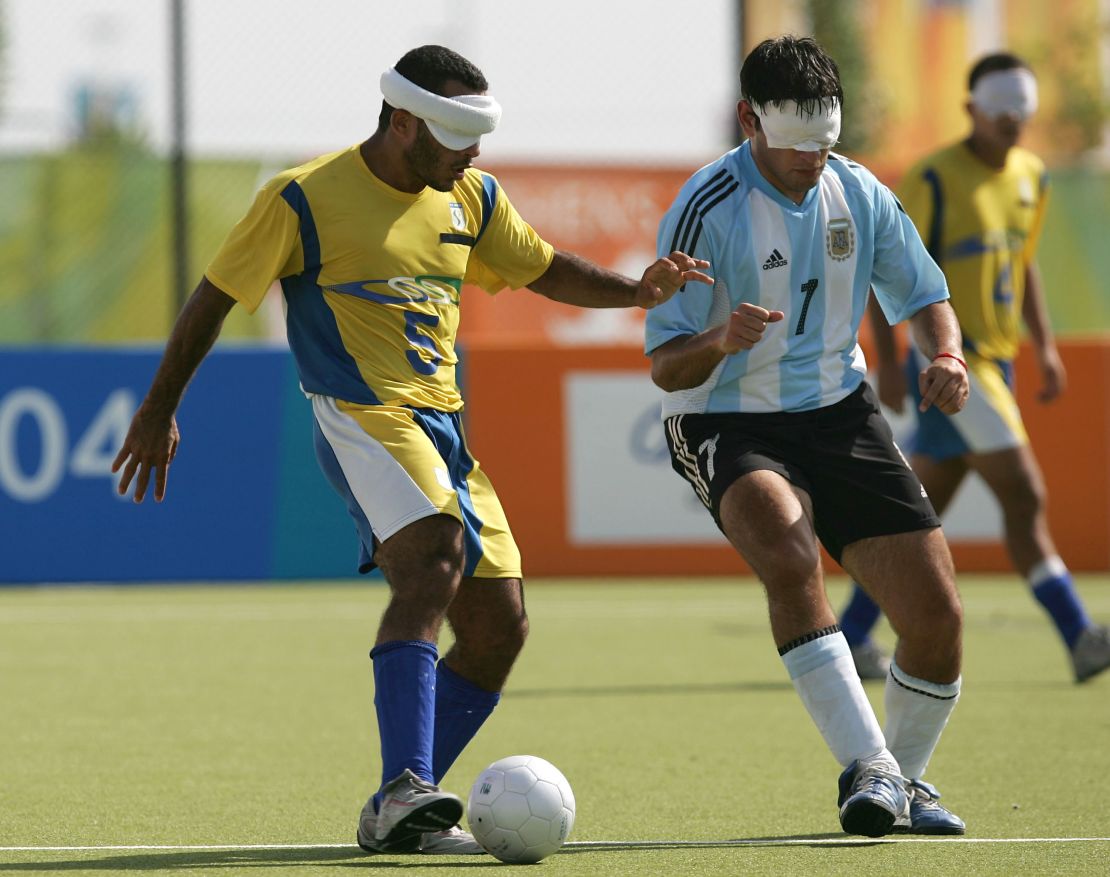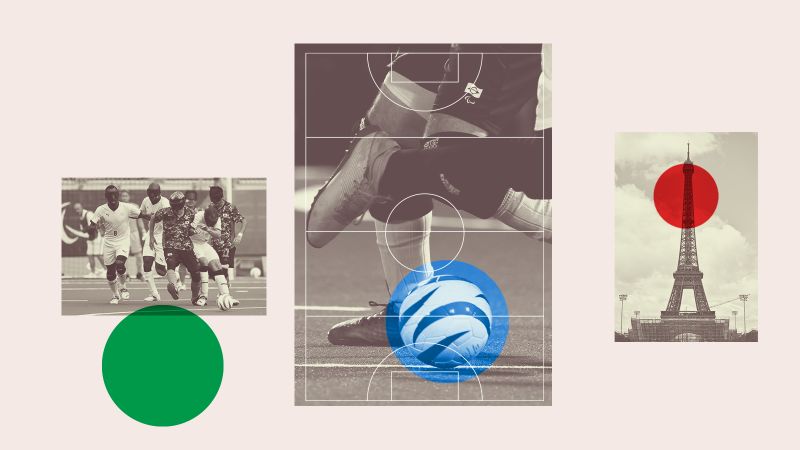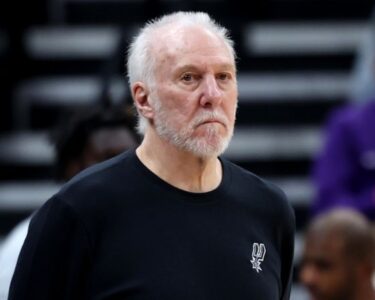CNN
—
Blind soccer often produces some of the most memorable moments at the Paralympics.
Remarkable videos of players showing incredible coordination and skill, slaloming through entire teams and scoring have gone viral at previous Games – and you can expect more of the same in Paris.
First introduced to the Paralympics at Athens 2004 and featuring in every Games since, Brazil has – perhaps unsurprisingly – become the team to beat, winning gold at every edition to date.
Nonato’s brilliant solo goal in the gold medal match in Tokyo three years ago earned the Seleção a narrow 1-0 over arch-rival Argentina to main its 100% record.
Argentina has been Brazil’s closest competition over the years and has made every blind soccer podium except London 2012.

The sport originated as a playground game for schoolchildren with visual impairments, according to ParaFootball. The International Blind Sports Federation (IBSA) made blind soccer one of its official sports in 1996.
There is only a men’s tournament at the Paralympics.
The rules
Each team is made up of five players: four outfield players and a goalkeeper. The outfield players must be classified as “completely blind” – meaning they have “very low visual acuity and/or no light perception” – but all of them must wear eye patching and eyeshades as some might see more light and shadows than others.
The goalkeepers, meanwhile, are sighted or partially sighted and provide vital communication to their team in defense, though they must stay inside the small, restricted area around the goal.
Each team also has another two guides to help them, one at the halfway line and another behind the goal the team is attacking.
The matches are 40 minutes long and are split into two halves of 20 minutes; in able-bodied soccer, matches are 90 minutes long in regulation with 45-minute halves. The field of play for blind soccer measures 40m x 20m (or roughly 131.2ft x 65.6ft), whereas FIFA recommends pitches of 105m x 68m (roughly 344.5ft x 223.1ft) for the able-bodied game.
While soccer matches are renowned for having boisterous and very loud crowds, spectators must remain silent during play in blind soccer so players can hear the ball, which has sewn-in rattles and is a size three ball, smaller than the standard size five used in the 11-a-side, able-bodied game.
There are also boards the whole way around the pitch to prevent the ball from going out of play, allowing for a faster paced game.
Players must shout “voy” or “I’m going” in Spanish – in a nod to the game’s Iberian roots – when making a tackle and, similar to basketball, if a team racks up five fouls in a half, a penalty is awarded for every subsequent foul.
Classification
In order to play blind football at the Paralympics, athletes must be classified as B1. ‘B’ stands for blind and ‘B1’ includes those with “very low visual acuity and/or no light perception.”
Regardless, all outfield players must wear eyeshades. The goalkeeper, meanwhile, can be full-sighted or classified as B2 or B3. Their job involves directing players, as well as saving shots.






